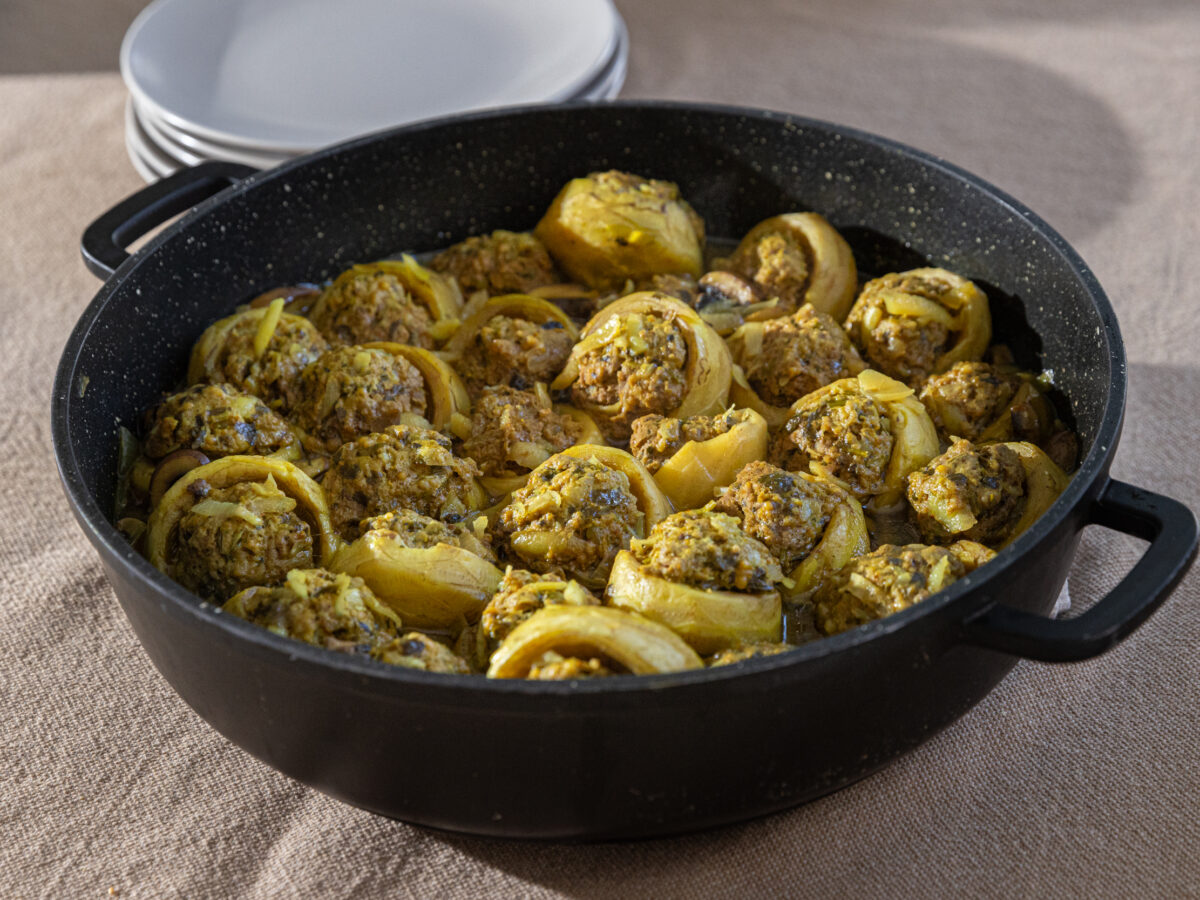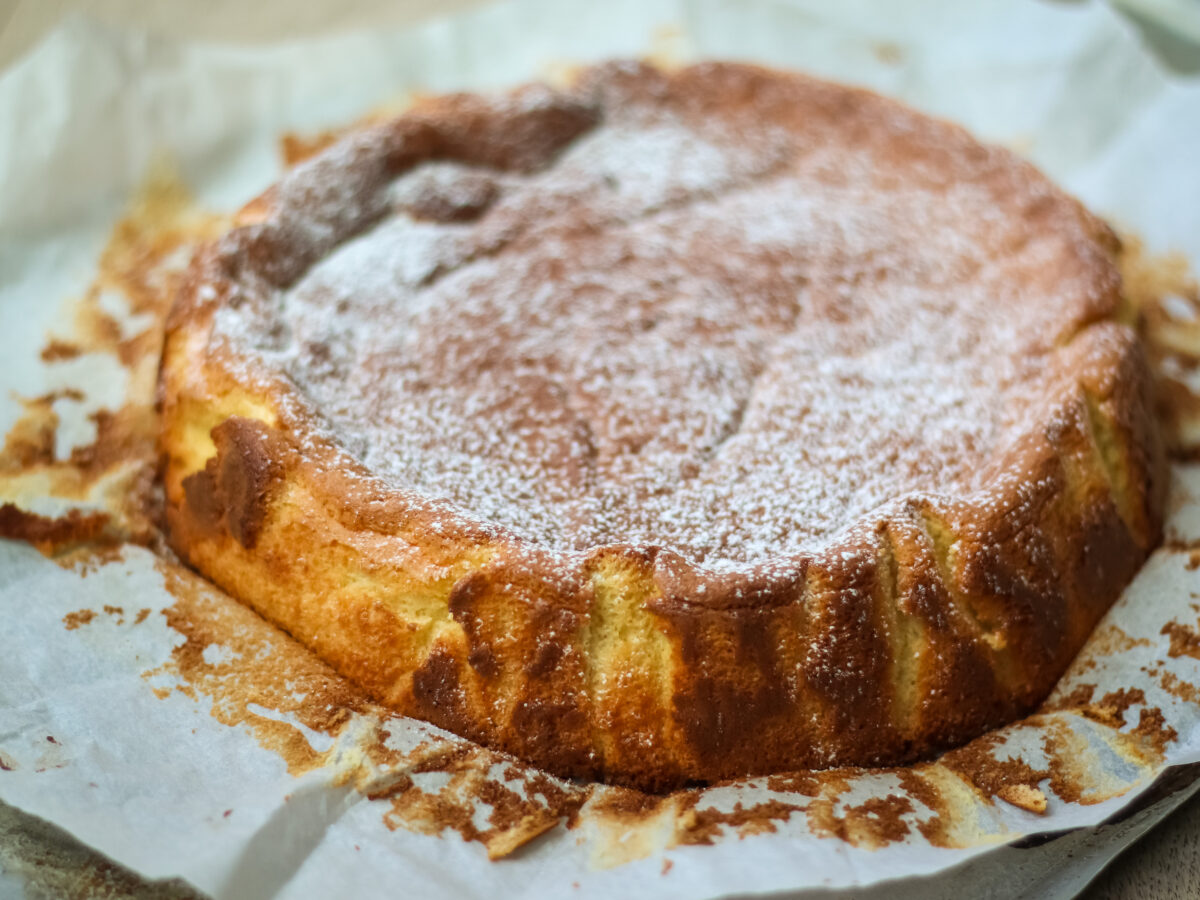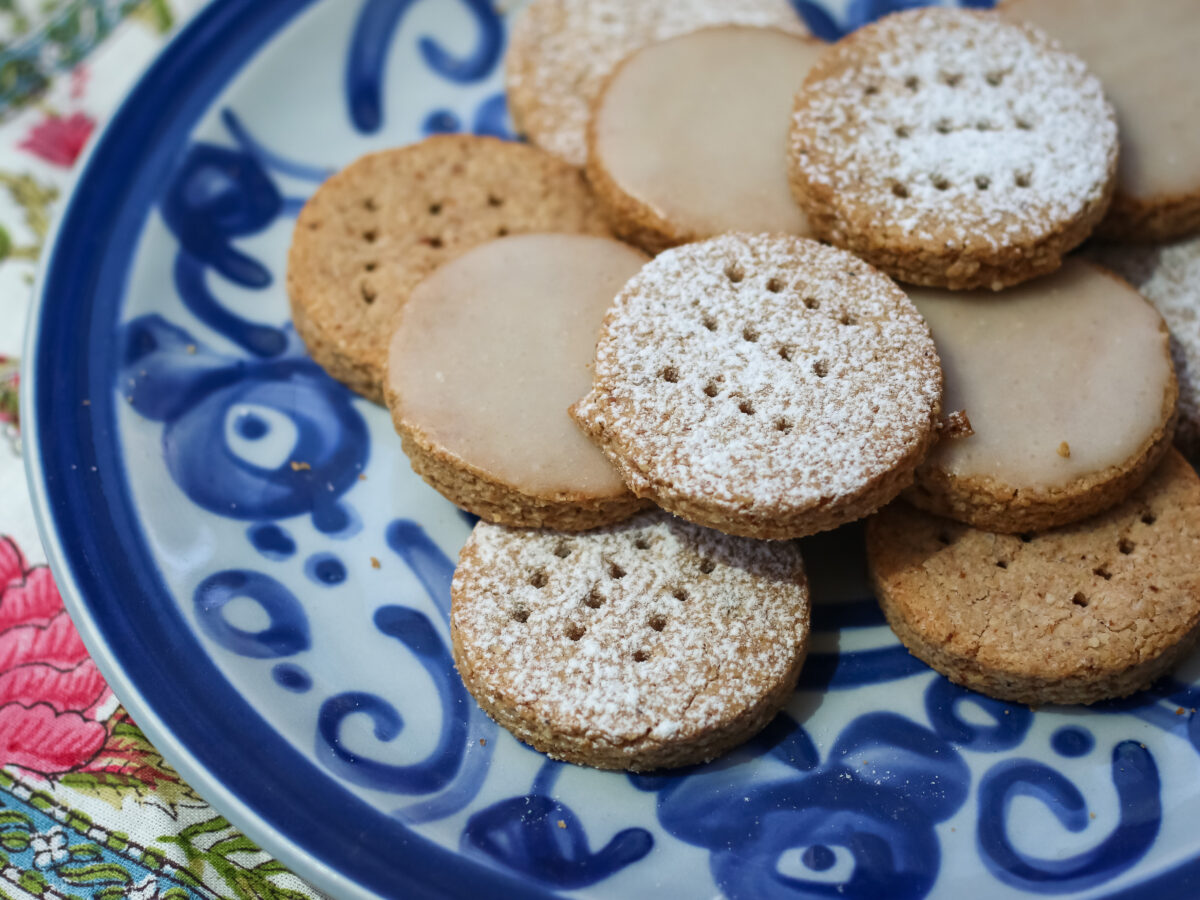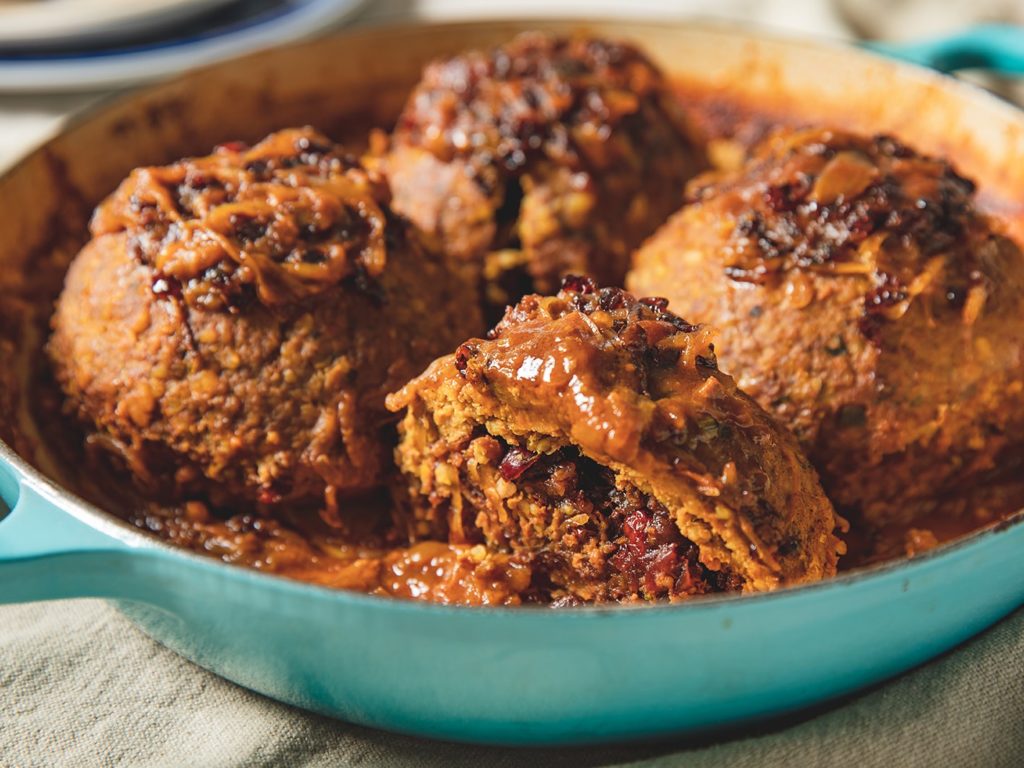
This recipe is one of the first incarnations of kubbeh, originally served as a festive dish on the sultan’s table, with the casing made up mainly of meat held together with a small amount of grain. The fillings varied but were always rich and meant to surprise the diner.
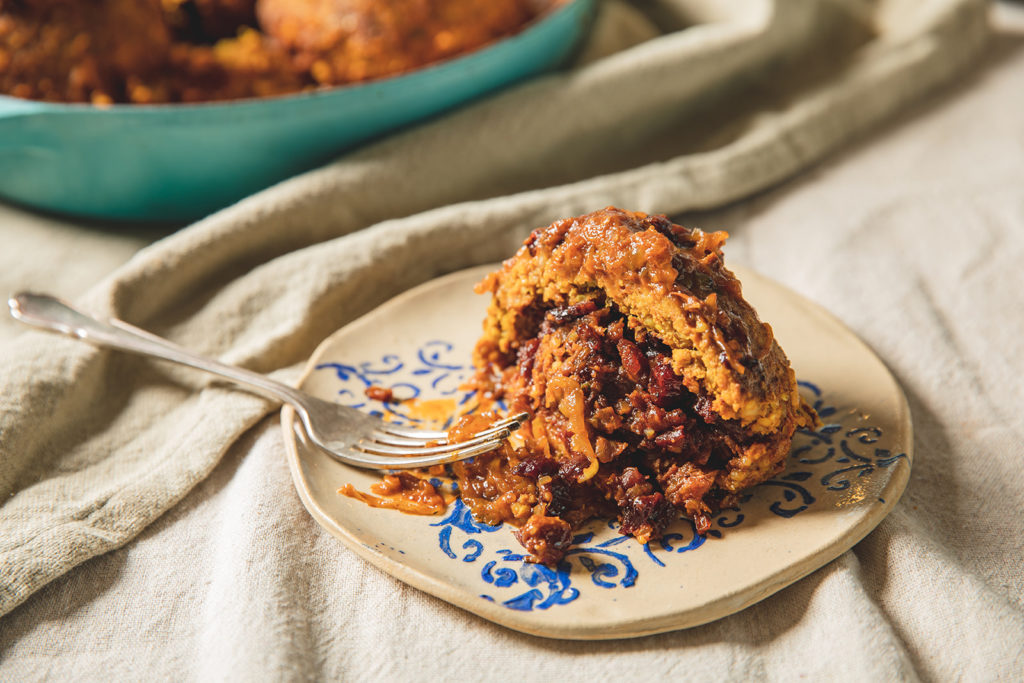
While researching the “Kubbeh Collection,” we came across a mention of it, calling it kofteh Tabrizi, or kofte from Tabriz, a city in the north of Persia, present-day Iran. Determined to track down a recipe, we dug deep into sources, finding the Persian Mama website. This recipe, developed by Asif Culinary Director Ayelet Latovitch, is adapted from it, though the yield is smaller and the sauce looser.
The preparation is spread over 2 days, fitting for a recipe once served on a sultan’s table. Serve it alongside a plate of fresh herbs and Persian cucumbers.
Check out more kubbeh recipes and explore the centuries-long history of this iconic regional dish here.
Ingredients
- Day 1
- ¼ cup yellow split peas
- 2 cups water
- Salt
- ½ cup short grain rice
- ¼ cup fine bulgur
- 1¼ teaspoon turmeric
- ½ tablespoon (7 grams) butter
- 1 medium-size onion, cut into eighths
- 1.1 lb (500 grams) ground beef
- 1 beaten egg
- ¾ teaspoon cinnamon
- ½ teaspoon ground black pepper
- ⅛ teaspoon hot paprika
- Day 2
- ¾ tablespoon dried savory/ hyssop leaves, finely ground
- 1½ teaspoon salt
- ⅛ teaspoon saffron
- ⅔ cup spring onions (green part only), thinly sliced
- 1 large onion, halved and thinly sliced
- 2 tablespoons (28 grams) butter
- For the filling:
- 2 tablespoons fried onion (from day 2)
- ½ tablespoon tomato paste
- 4 tablespoons (45 grams) barberries
- 4 tablespoons (45 grams) walnuts, chopped
- 6 dried organic dried apricots, finely chopped
- 4 tablespoons (45 grams) dried cherries, chopped
- 4 tablespoons (45 grams) dried sour cherries, chopped
- 4 tablespoons (45 grams) cranberries in apple juice, chopped
- A pinch of salt and ground black pepper
- For the sauce:
- 4 tablespoons fried onion (from the day 2)
- 2 tablespoons tomato paste
- 1 tablespoon (14 grams) butter
- ⅛ teaspoon saffron
- 3 cups hot water
- ¾ teaspoon coarse salt
- ¼ teaspoon ground black pepper
- ½ teaspoon ground cinnamon
- To serve:
- ¼ teaspoon ground cinnamon
- 4 tablespoons fried onion
- 2 tablespoons barberries
- Salt and black pepper, to taste
Preparation
- Day 1: Cook the split peas in 1 cup of water with a little salt over a medium-low heat until completely soft, about 20 minutes. Strain and set aside.
- In a small pot, place the rice, bulgur, 1 cup water, ¼ teaspoon turmeric, a pinch of salt and ½ tablespoon of butter, and cook over a medium-low heat until all the liquid evaporates and the rice is semi-cooked. Cool.
- Briefly pulse the onion, cooked split peas and rice mixture in a food processor, just until the onion is finely chopped. Add the minced meat, and pulse briefly until combined. Transfer to a bowl, add the egg and the remaining spices and mix well. Cover and refrigerate overnight.
- Day 2: Grind the savory (or hyssop) with the salt and saffron. Add to the meat mixture prepared the previous night. Add the sliced spring onion and mix well, kneading the mixture that will eventually hold the filling. One method is to take some of the mixture and toss it from a height back into the bowl, literally slapping it vigorously (while wearing an apron, as things may get messy). Repeat until the mixture is homogenous and soft. Cover and refrigerate for 2 hours.
- Meanwhile, fry the white onion slices in butter over a low heat until golden.
- Prepare the filling: Mix all the filling ingredients in a bowl and divide into 3 portions. Set aside.
- Prepare the sauce: Warm the golden onion, tomato paste and butter in a 10-in (24 cm) -wide pot with a lid over a medium-low heat until aromatic. Add the remaining ingredients, mix well and bring to a gentle boil. Remove from the heat.
- Assemble the dumplings: Divide the meat casing mixture into 3 equal parts, and then each of those into two halves, which will form one dumpling.
- Pour a teaspoon of water into a small bowl that holds 1 ⅓ cups / 300 ml (you can measure by pouring in water and then dumping it out) . Take one half of the dumpling casing and press it to the bottom and sides of the bowl. Shape it into a “bowl” of meat with a uniform wall thickness, protruding only slightly from the edges of the bowl itself. Place a third of the filling mixture in the center. Shape the other half of the meat casing into a disc the diameter of the bowl and cover over the filling.
- Gently and patiently press and fasten the “lid” to the edges. Turn the bowl over into the palm of your hand and shake it gently. The water and the shaking should help release the meatball into your palm. Be patient but determined.
- Gently roll the stuffed dumpling between your hands into a perfectly round ball. Transfer to a tray lined with parchment paper and repeat with the remaining mixtures. Cover the tray with plastic wrap and refrigerate for 1 hour.
- Cook the dumplings: Gentle boil the sauce over a medium-high heat. Carefully slide the dumplings into the sauce. From this moment do not move the dumplings. Reduce to a medium-low heat and cook, uncovered, for 30 minutes.
- Cover the pan, reduce to a low heat and cook for 1½ hours, occasionally spooning the sauce over the dumplings. Remove from the heat and let rest for 10 minutes.
- To serve: Gently transfer the dumplings to a serving dish. To the pot, add 2 cups hot water, the garnish, and a pinch of salt and pepper. Mix well and bring to a gentle boil over a medium heat. Remove from the heat. Pour the sauce over and around the dumplings. Serve alongside a plate laden with fresh greens (watercress, tarragon, parsley, scallions, basil and cucumber).

